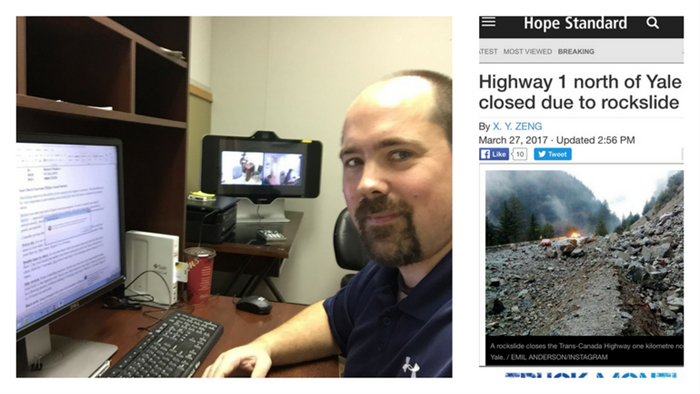
A virtual clinic ensured isolated patients could still receive health care when the highway between Hope and Boston Bar was closed by a rock slide.
Every Wednesday from 10 a.m. to 3 p.m., a nurse practitioner and a physician make the weekly trip to the Anderson Creek Health Clinic at the Boston Bar First Nation, providing care to people in the surrounding communities about an hour’s drive from Hope.
Here, geography and weather can be the biggest barriers to accessing health care services. Besides the distances health care providers or patients must travel, the highway closes occasionally due to snow, accidents or rock slides.
So for a couple of years now, Dr. Joshua Greggain and his colleagues have been working to incorporate virtual care to supplement those five hours of health services. Fraser Health partnered with the First Nations Health Authority to get the equipment, but had to wait for internet speeds and Wi-Fi availability in the area to catch up.
The clinic has been using the equipment for “a handful of things,” including mental health care providers in Chilliwack connecting to a nurse in Boston Bar, but patients seemed content to wait until Wednesday to see a doctor or nurse practitioner in person. When a rock slide closed the highway for several days in March, mother nature gave the technology a boost.
“It became apparent the highway wouldn’t reopen for a few days, and there was no way around the slide that didn’t involve a three-hour trip,” said Dr. Greggain. “Instead of cancelling the Wednesday clinic we offered patients the opportunity to be part of our first full virtual primary care clinic.”
He saw 16 patients with both acute and chronic illness that day, even new patients who needed follow up from an emergency visit. While he was located at his medical practice in Hope, in Boston Bar a nurse helped check patients in and turn on the equipment. This video conference unit includes the capacity to be his “eyes and ears” -- a skin camera, otoscope to examine ears and throats, an ophthalmoscope to examine eyes, and an automated blood pressure cuff.
Patients responded positively and Dr. Greggain sees even more possibilities in the future, from specialist appointments to in-home care. “We will always go up in person but we hope to expand services, too,” he said. “Imagine a mom who’s breastfeeding with three other children. She could get health care services in her own home without worrying about getting the kids out the door or finding child care.”
